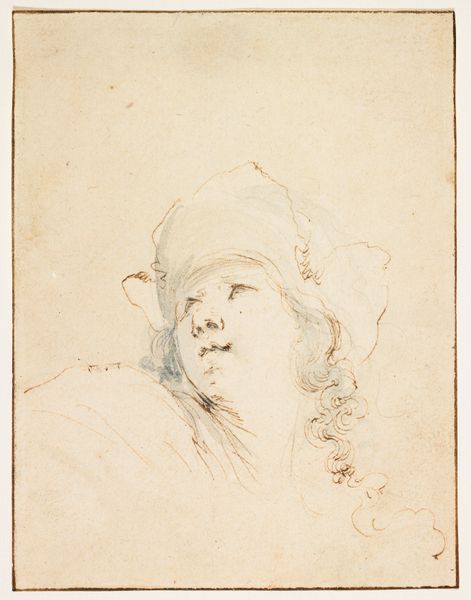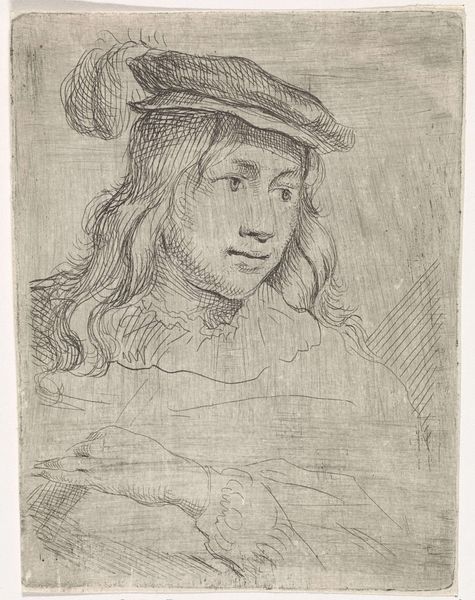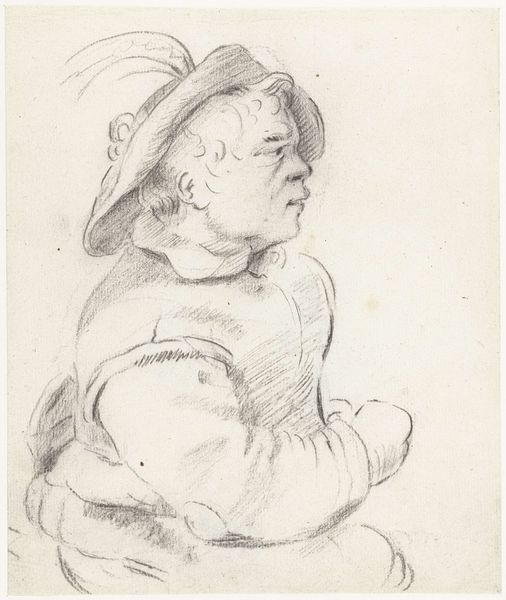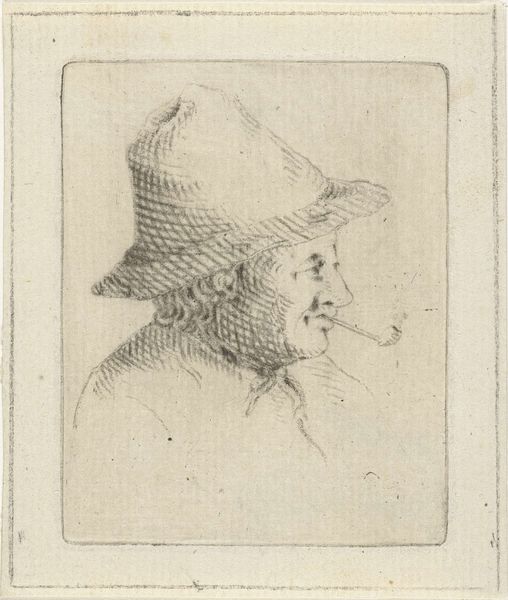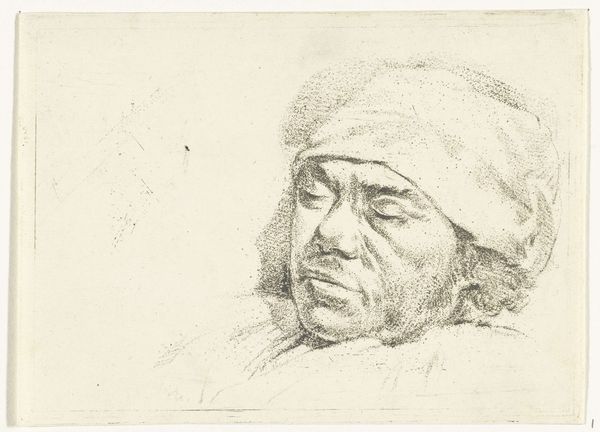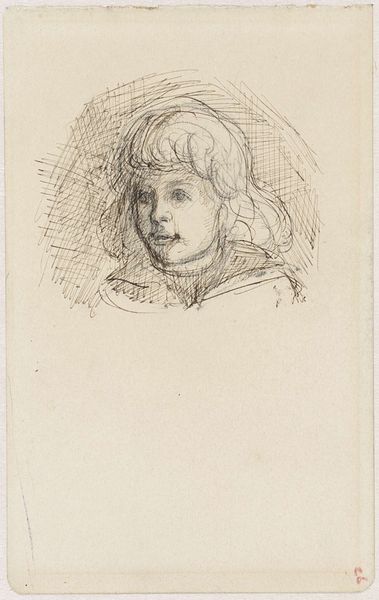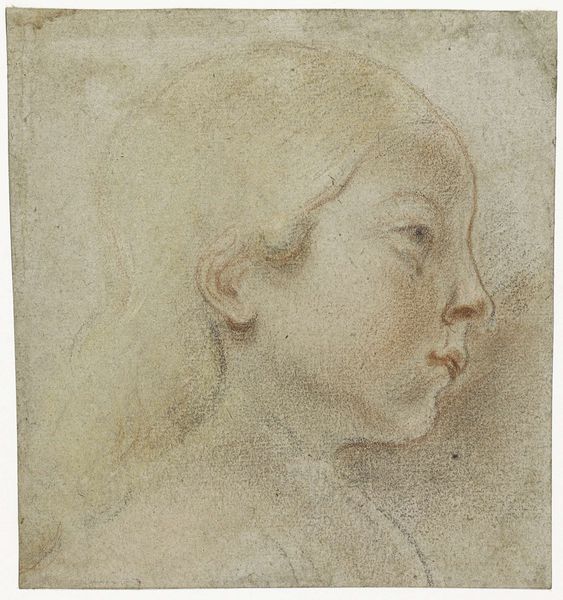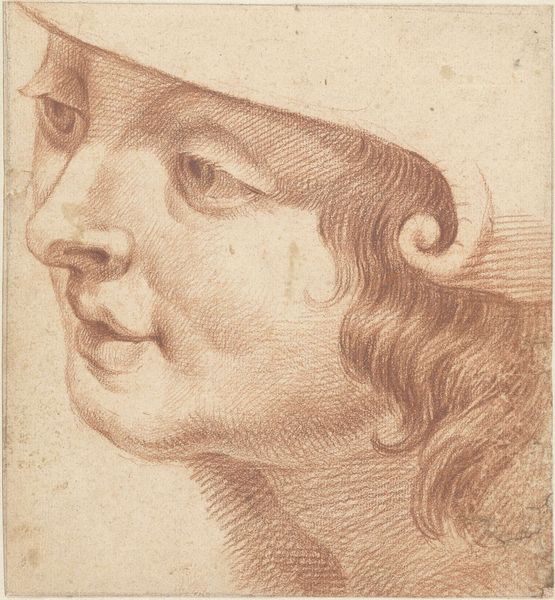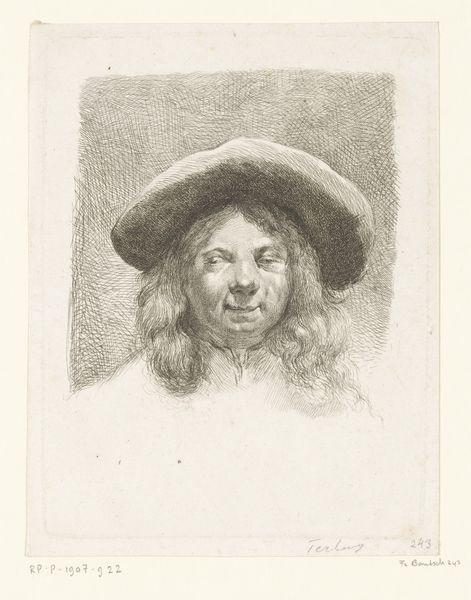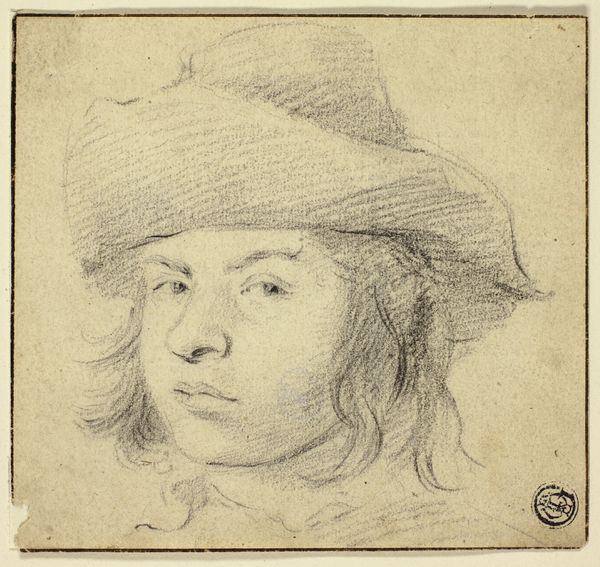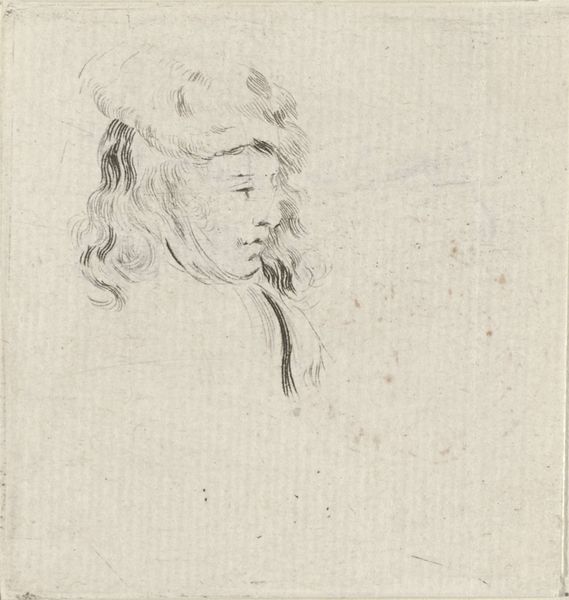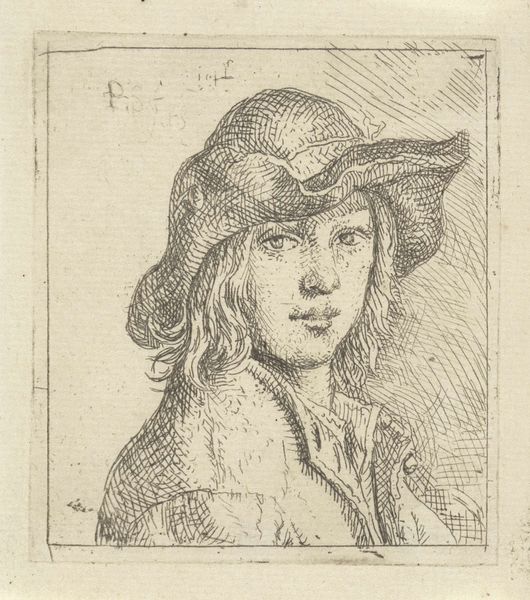
drawing, etching, paper
#
portrait
#
pencil drawn
#
drawing
#
amateur sketch
#
neoclacissism
#
facial expression drawing
#
light pencil work
#
etching
#
pencil sketch
#
paper
#
personal sketchbook
#
portrait reference
#
idea generation sketch
#
portrait drawing
#
pencil work
Dimensions: height 200 mm, width 152 mm
Copyright: Rijks Museum: Open Domain
Curator: Here we have Gerard van Nijmegen's "Portret van een jongen met hoed," created in 1796, part of the Rijksmuseum's collection. It's a pencil and etching on paper. Editor: My immediate reaction is one of stark simplicity. The stark contrast created by the light pencil work is captivating. The crosshatching of the face is incredible! Curator: It’s interesting how the piece situates itself within the broader socio-political narratives of its time, particularly considering its origins in the Netherlands during a period of significant political upheaval, caught between revolution and burgeoning nationalism. Who was this boy in the hat, and what did the hat signify? This could have symbolized the Dutch struggle to assert identity. Editor: That is possible, but from a formalist perspective, the hat mainly directs our gaze. Notice how Nijmegen has cleverly employed it as a structural device to frame the face, drawing our eyes to the interplay of light and shadow, and ultimately, to the boy's enigmatic gaze. This adds layers to the psychological depth of the composition. Curator: Indeed. We can explore that psychological dimension further. During the 18th century, anxieties surrounding masculinity were increasing, often influenced by revolutionary ideals and evolving social structures. I feel that young boy in the artwork embodies the transitional phase of identity, uncertain and somewhat melancholic. Editor: Melancholic, certainly. Though I tend to think that is influenced more by his eyes—see how the artist made those eyes large and almost pleading? That, in contrast to the sternness of the mouth and cheek, creates the internal tension. I think semiotics plays a big role. The artist is playing with tension, or creating tension where we might expect regularity. Curator: Right. I see how the formal structure lends to a better understanding of the nuances of identity being captured and expressed during this transitional point in the Neoclassical movement. Editor: It also lends an intimacy, the starkness, and what I think could only be described as minimalism. A raw expression is portrayed in all the texture! Curator: Absolutely. Together, examining social context and close readings give us a sense of history and humanity behind Nijmegen's image. Editor: Agreed. Each approach reveals something different—a combined effort leads us to the nuance that lies at the heart of it all.
Comments
No comments
Be the first to comment and join the conversation on the ultimate creative platform.
